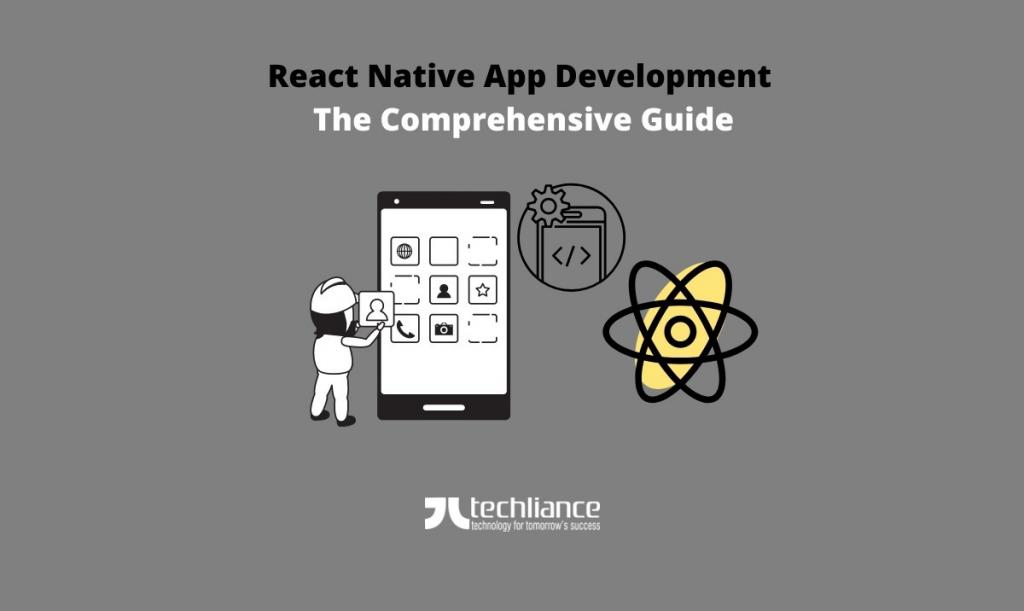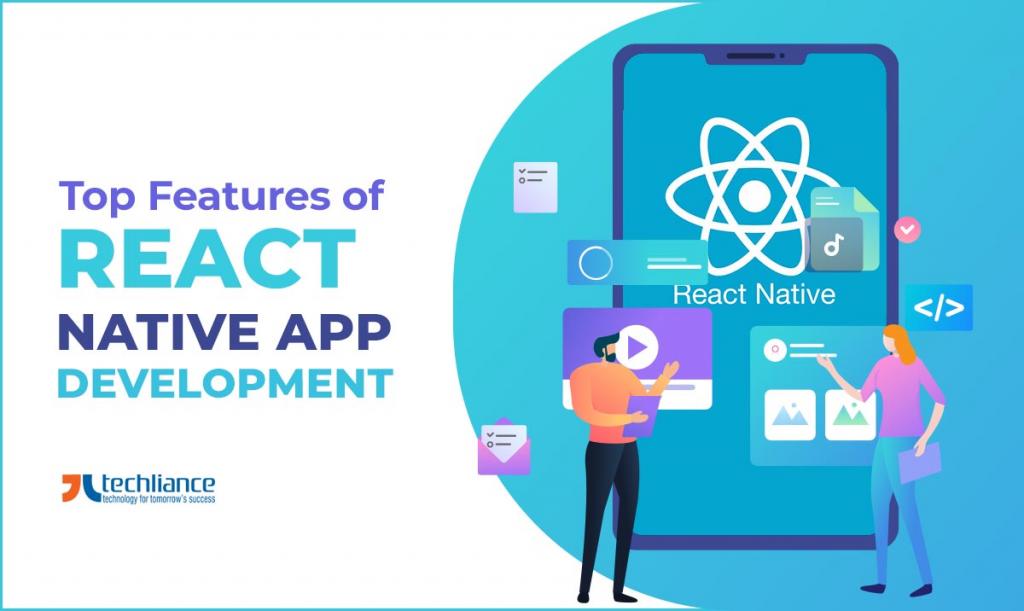The use of handsets or mobiles has increased in the last decade worldwide and in the US. React Native has come up as the open-source framework with a declarative programming paradigm for building native mobile apps. That’s why React Native app development is growing in 2024 and will keep doing so in the future.
Tech giants like Facebook, Instagram, Bloomberg, and others have successfully used the platform to develop scalable products. Businesses prefer building mobile apps using Reactive Native because programmers can write code in ReactJS, the most popular JavaScript library. They can share the code across Android and iOS to save development effort.
This cross-platform mobile app development framework has gained the trust of developers quickly. If you are looking to develop scalable mobile apps then look no further than React Native. Cross-platform apps make the user experience a satisfactory one in comparison to hybrid apps.
The world of mobile app development is moving at a fast pace. Technological advancement has brought everything to the fingertips of consumers. Today, there are multiple cross-platform frameworks available for mobile app developers but React Native is best of all.
React Native has the best collection of APIs, toolsets, and libraries to ease the app development process. The time spent on the apps crafted using this framework is much higher than time spent on the web. This article provides relevant details related to React Native app development.

What is React Native?
The open-source mobile app development framework React Native is used for creating cross-platform applications. The Facebook team created React Native and launched it in 2015. React Native framework is based on ReactJS, the most famous JavaScript library and its popularity is growing with time.
The goal was to fulfill the cross-functional app development needs on multiple platforms. React Native focuses on native performance so that businesses get 2 native-like apps for use. Businesses get a competitive edge by developing mobile apps using React Native framework that is compatible with Android and iOS.
React Native is finally bridging the gap between native and hybrid apps. Programmers write codes only once using React Native and it proves cost-effective for organizations. It can also power all kinds of applications and platforms.
It also supports Web, Android TV, tvOS, Windows, macOS, and UWP. React Native is even driving virtual reality devices by Oculus (Meta). You can write code in React Native using Java/Kotlin for Android, Object-ve-C/Swift for iOS, and C++/WinRT or C# for Windows.
Businesses should use React Native framework because of the relevant points. The process proves to be a time-saver for developers and project managers. React Native enhances the power of developers to create functional mobile apps for different purposes.
It is hard to distinguish the React Native apps from others built using Obj-C/Swift or Java/Kotlin. React Native uses the basic UI building blocks similar to Android and iOS applications. The framework has risen to become one of the most sought-after solutions for effective mobile app development.
Reading: Factors behind the growing popularity of React Native
Top Features of React Native App Development during 2024
Have you come across multiple cross-platform or hybrid app development platforms in the market? Are you still unsure of the selection of the most suitable framework for making native-like apps? React Native separates itself from the rest with its excellent features.
Nowadays, native apps have gained a special place in the minds of people and app developers. So, this is where Native React fulfills the expectations. Let us look into different features of the React Native app development framework to understand its usage.
- Cross-Platform Development
- Reusable Code
- Instinctive & Flexible Architecture
- Supportive UI
- Secure Plugins
- Programmer Community’s Backing
- Hot and Live Reloading
Next, we discuss these factors that make React Native app development in hot demand.
Cross-Platform Development
You don’t have to hire two separate teams to develop the same app for different mobile operating environments. React Native makes it possible to write a single JavaScript codebase and reuse it on multiple platforms. So, the same code written in React Native works for both iOS and Android apps. Moreover, you can utilize the same codebase for other platforms too.
Reusable Code
Now, there is no need to use separate codes to build responsive mobile apps. React Native ensures the use of the same code for deployment on Android and iOS. So, you can increase the speed and efficiency of the development process with reusable code.
Also, you can achieve the platform-specific goals because of extensions. There are several other benefits of the React Native framework. For example, detection of the OS system, reduction of deployment time, and minimizing the cost of the project, etc.

Instinctive & Flexible Architecture
You can build upon someone else’s work with help of a modular and intuitive interface. It boosts the flexibility of a development team and makes it easier to create new updates for mobile applications. Accordingly, the QA team now needs less time to build appropriate testing scenarios and thus saves valuable time.
Supportive UI
In case, you’re planning to rely on platform-specific design elements, then Reactive Native is the best choice. The framework is perfect for performing MVP development through 2024. Because it doesn’t include any type of complex UI patterns.
React Native uses the same building block as native apps. Your development team can keep the same design layout across both apps. Subsequently, they can make applications that look similar on Android and iOS platforms.
Tip: Why hire best React Native company?
Secure Plugins
React Native has many advanced-level app security features. You can use its huge library of secured extensions to get tailor-made applications for users. Therefore, React Native has become one of the safest app development frameworks.
Programmer Community’s Backing
The major businesses, startups, and IT companies use the React Native framework. Therefore, you enjoy the huge support of React Native developers across the globe. You can get relevant public codebases to develop powerful apps and reduce project time. Use the community-driven environment as mobile app developers and access the huge catalog of free available components.
Info: Why React Native is best for cross-platform applications
Hot and Live Reloading
React Native framework supports live and hot reloading. Speaking of 2024, both features are among the most prevalent features in mobile development globally and in the United States. Live reloading is meant for applications where changes are made only once.
While hot reloading is the making of changes in specific areas. It is the feature easing the development and testing stages of the app development process. As the developer, you have enough time now for tracking real-time changes.

Final Words
The future of mobile app development is full of opportunities and enhances the speed of the developmental process. Hence, select your app development framework wisely to get all the desired results. React Native is widely accepted in the IT industry by entrepreneurs and developers alike thanks to its innovative features.
Empowering top brands internationally and in the USA, React Native can enable others to come up into the top list. Mobile apps will decide the future of businesses, so choose React Native to develop a robust cross-platform application. Adapt to the latest development trends to get ahead of competitors by delivering high-level user convenience with functional mobile apps.
Do you want to craft a high-performing native-like app for cross-platform deployment? Join hands with Techliance to go from ideation to delivery in less time and cost while maintaining quality. Set off with a free 1-week trial right now.




